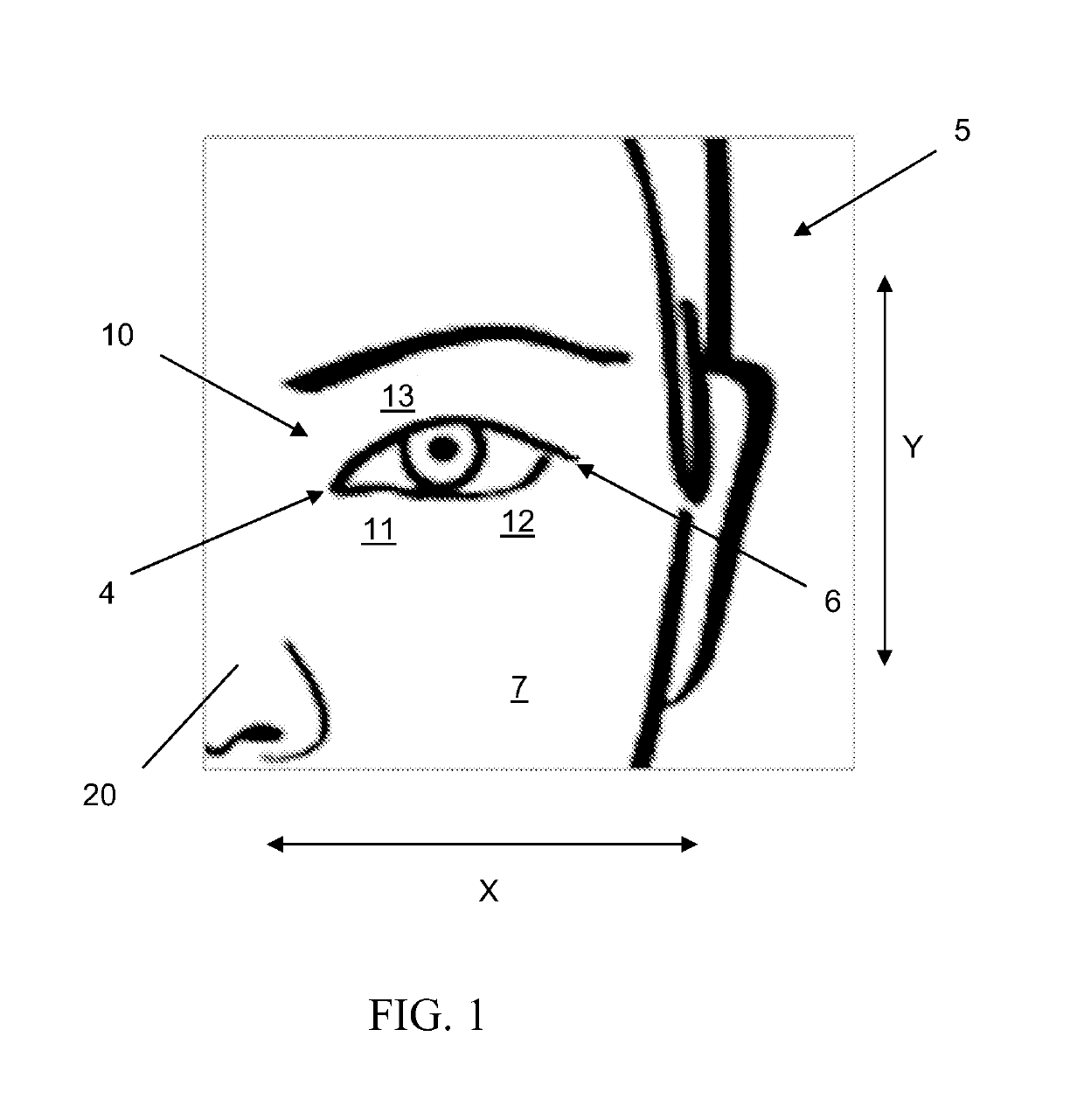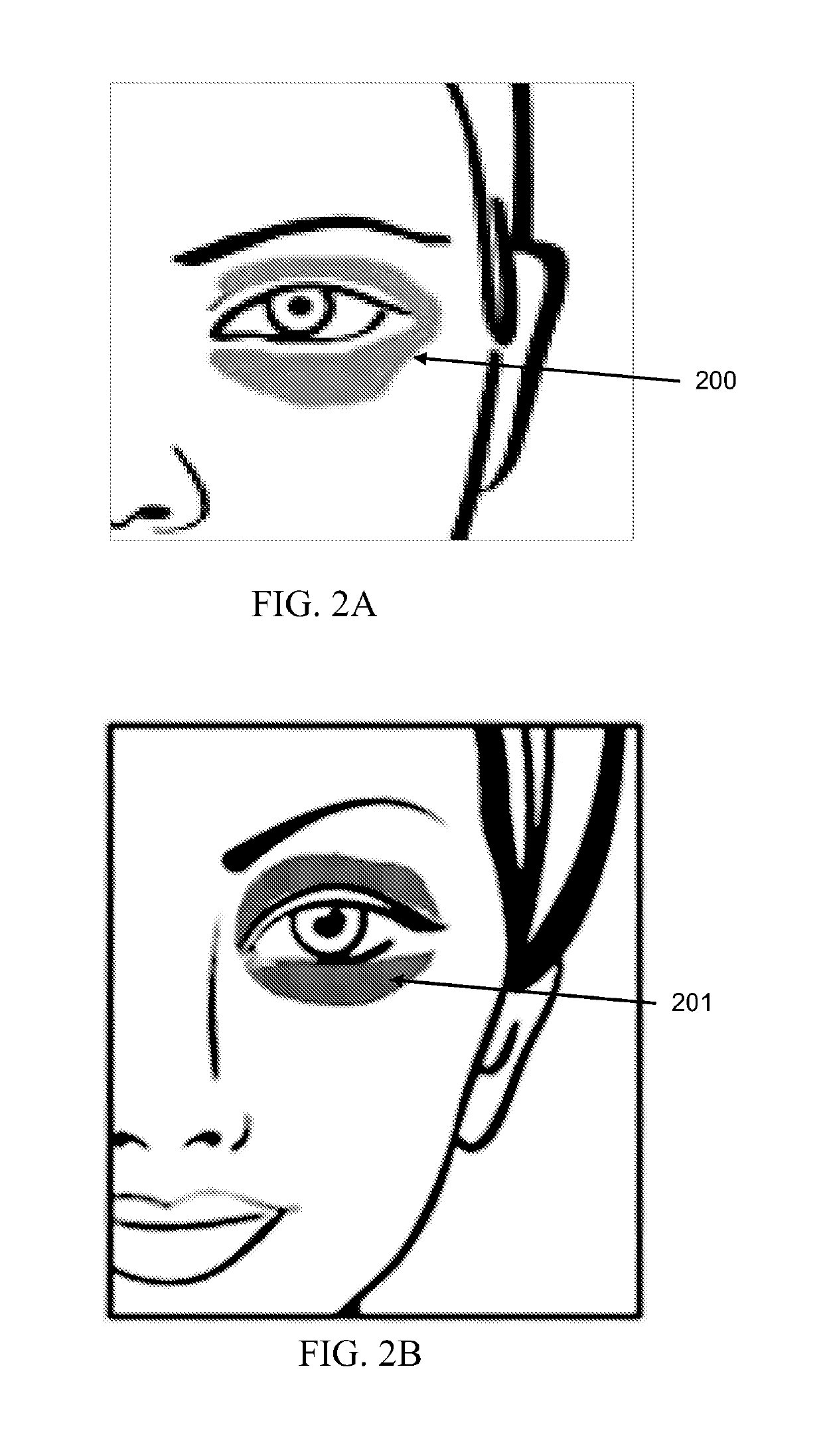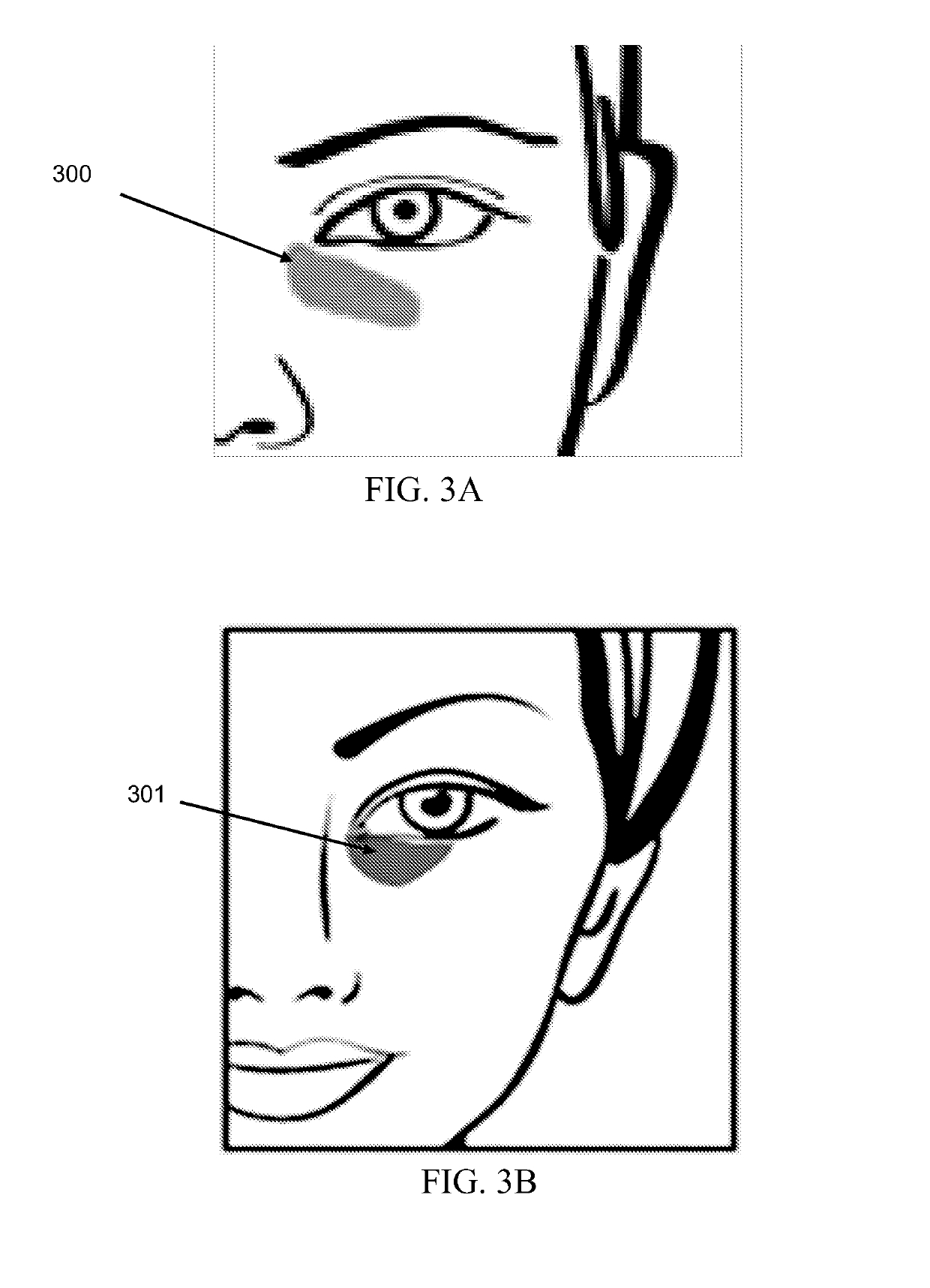Methods of classifying periorbital dyschromia and systems therefor
a technology of periorbital dyschromia and classification methods, applied in the field of methods and systems for classifying periorbital dyschromia, can solve the problems of periorbital dyschromia, particularly undesirable aesthetic eye feature, wrinkles and discoloration of skin, and skin around eyes may be easily dehydrated and particularly vulnerable to adverse effects
- Summary
- Abstract
- Description
- Claims
- Application Information
AI Technical Summary
Benefits of technology
Problems solved by technology
Method used
Image
Examples
example 1
[0138]This example illustrates how different types of periorbital dyschromia can be distinguished using the Visual Classification Method. The Munsell Book of Color, Matte Collection (Munsell Color, Inc.) nomenclature is used to describe the color appearance of the different types of periorbital dyschromia or the lack thereof. The basal skin tone in this example refers to overall tone of the skin on the cheek.
1. No Dyschromia: occurs when there is no discoloration present in the periorbital region, discoloration is present but the intensity is very low (“non-severe”), or the discoloration does not extend beyond the inner corner of the eye (e.g., into Zone 1).
[0139]2. Type 1 Periorbital Dyschromia: occurs when Zone 1, Zone 2 and Zone 3 of the periorbital skin region are affected with a “tanned-like” skin tone. The tanned-like appearance found on Type I periorbital dyschromia may result from a darkening of the periorbital skin and an increase of the chroma relative to the basal skin to...
example 2
[0140]This example illustrates the distinctions between Type I, Type II and Type III periorbital dyschromia using imaging methods. Using the methods described herein, images were obtained from test subjects identified as having Type I, Type II, or Type III periorbital dyschromia, and the RGB values and B / G ratios from each of zones 1, 2 and 4 were determined for each subject. Zone 4 refers to the combination of Zones 1 and 2. The zones were masked as described in the imaging analysis method above. Zone 4 was masked as illustrated in FIG. 16. Side-by-side plots of the various RGB values and B / G ratios are illustrated in FIGS. 19 to 30. The percentile shown on the y-axis of the charts in FIGS. 19 to 30 represents the percentile ranking of each individual in the distribution. The data point at the 50th percentile represents the median of the data set (i.e., the individual who was in the middle of the rank ordered population). The X-axis shows the average imaging value for the region an...
example 3
[0148]This example further illustrates how imaging values can be used to distinguish Type I, Type II and Type III periorbital dyschromia. Using the methods described herein, images were obtained from test subjects identified as having Type I, Type II, or Type III periorbital dyschromia, and the color corrected imaging values for each of Mask A, Mask B and Mask C were determined for each image. Table 5 shows the resulting values.
[0149]
TABLE 5Type IImaging ValueMask AMask BMask CR153167161G108123116B9510198B / G0.870.820.84L505553a*161415b*151917Hue (h)435349Chroma (C)222323
[0150]
TABLE 6Type IIImaging ValueMask AMask BMask CR161176169G119135128B108116112B / G0.910.860.88L546057a*151314b*121715Hue (h)395246Chroma (C)202120
[0151]
TABLE 7Type IIIImaging ValueMask AMask BMask CR157176167G113133124B101111107B / G0.890.840.86L525956a*161314b*141816Hue (h)415448Chroma (C)212322
[0152]This example illustrates the histological differences between No Dyschromia, Type I, Type II and Type III periorbital...
PUM
 Login to View More
Login to View More Abstract
Description
Claims
Application Information
 Login to View More
Login to View More - R&D
- Intellectual Property
- Life Sciences
- Materials
- Tech Scout
- Unparalleled Data Quality
- Higher Quality Content
- 60% Fewer Hallucinations
Browse by: Latest US Patents, China's latest patents, Technical Efficacy Thesaurus, Application Domain, Technology Topic, Popular Technical Reports.
© 2025 PatSnap. All rights reserved.Legal|Privacy policy|Modern Slavery Act Transparency Statement|Sitemap|About US| Contact US: help@patsnap.com



